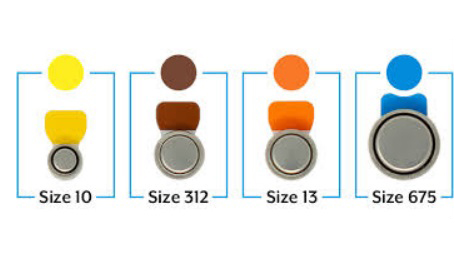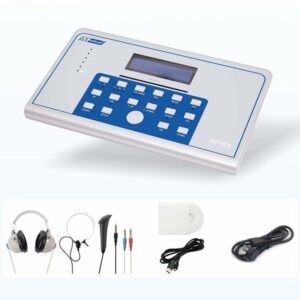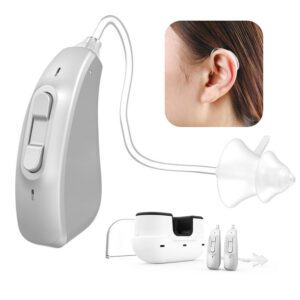For anyone using hearing Aids, batteries are the essential power source that keeps them working throughout the day. But one of the most common questions users ask is: how long do hearing aid batteries last?
The answer depends on the battery size, the type of hearing aid, and your daily usage habits. In this guide, we’ll break down the average lifespan of different hearing aid battery models, compare disposable and rechargeable options, and share practical tips to help you get the most out of your batteries.

Factors That Affect Hearing Aid Battery Life
Several factors influence how long your hearing aid batteries last:
Battery Size & Capacity – Larger batteries generally provide longer lifespan.
Daily Usage – The more hours per day you wear your hearing aids, the faster the battery drains.
Hearing Aid Features – Bluetooth streaming, noise reduction, and wireless connectivity require more power.
Environmental Conditions – Humidity, temperature, and storage can impact performance.
Hearing Aid Battery Sizes and Their Average Lifespan
Hearing aid batteries come in four main sizes. Each size is color-coded and designed for different styles of hearing aids.
Size 10 hearing aid batteries(Yellow)
Smallest battery, commonly used in completely-in-canal (CIC) and invisible-in-canal (IIC) hearing aids.
Average lifespan: 3–7 days.
Best for discreet hearing aids, but requires frequent replacement.
Size 312 hearing aid batteries(Brown)
A popular size for in-the-ear (ITE) and some behind-the-ear (BTE) hearing aids.
Average lifespan: 5–10 days.
Balances compact size with reasonable battery life.
Size 13 hearing aid batteries(Orange)
Slightly larger, often used in mid-sized BTE hearing aids.
Average lifespan: 7–14 days.
A good option for users who need longer-lasting power.
Size 675 hearing aid batteries(Blue)
The largest battery, commonly used in powerful BTE hearing aids and cochlear implants.
Average lifespan: 10–20 days.
Provides strong performance for people with severe hearing Loss.
Disposable Zinc-Air vs. Rechargeable Batteries
Today, hearing aid users can choose between traditional zinc-air batteries and modern rechargeable lithium-ion batteries.
Zinc-Air Batteries
Activated by pulling off the tab, allowing air to enter.
Widely available, affordable, and compatible with all standard hearing aids.
Require regular replacement.
Rechargeable Lithium-Ion Batteries
Can last a full day on a single charge.
Battery lifespan is typically 2–5 years before needing replacement.
Eco-friendly, convenient, and cost-effective over the long term.
Tips to Extend Hearing Aid Battery Life
If you rely on disposable batteries, these tips can help you maximize usage:
Store batteries in a cool, dry place.
After removing the tab, wait 1–2 minutes before inserting the battery to activate it fully.
Turn off hearing aids or open the battery door when not in use.
Avoid exposing batteries to extreme heat or humidity.
Use a battery tester to monitor performance.
Should You Switch to Rechargeable Hearing Aids?
If you find yourself replacing disposable batteries too often, rechargeable hearing aids may be a better solution. They’re especially convenient for people who travel frequently or dislike carrying spare batteries.
Conclusion
So, how long do hearing aid batteries last? It depends on the size and type of battery you use:
Size 10: 3–7 days
Size 312: 5–10 days
Size 13: 7–14 days
Size 675: 10–20 days
While zinc-air batteries remain popular, rechargeable hearing aids are becoming an increasingly practical and eco-friendly option. The best choice comes down to your lifestyle, hearing needs, and convenience.


